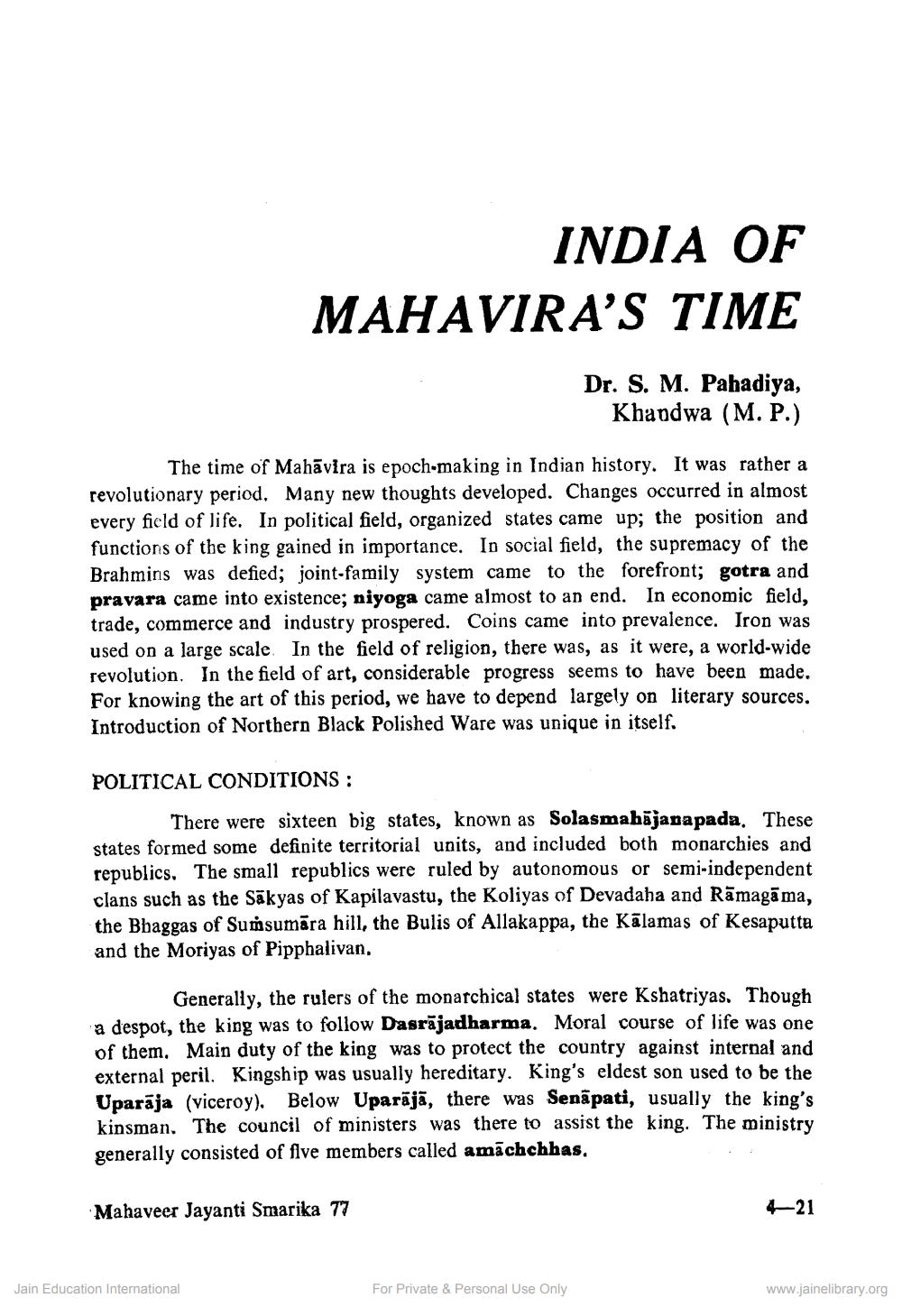________________
INDIA OF MAHAVIRA'S TIME
Dr. S. M. Pahadiya,
Khandwa (M.P.)
The time of Mahāvira is epoch-making in Indian history. It was rather a revolutionary period. Many new thoughts developed. Changes occurred in almost every field of life. In political field, organized states came up; the position and functions of the king gained in importance. In social field, the supremacy of the Brahmins was defied; joint-family system came to the forefront; gotra and pravara came into existence; niyoga came almost to an end. In economic field, trade, commerce and industry prospered. Coins came into prevalence. Iron was used on a large scale. In the field of religion, there was, as it were, a world-wide revolution. In the field of art, considerable progress seems to have been made. For knowing the art of this period, we have to depend largely on literary sources. Introduction of Northern Black Polished Ware was unique in itself.
POLITICAL CONDITIONS :
There were sixteen big states, known as Solasmahājanapada. These states formed some definite territorial units, and included both monarchies and republics. The small republics were ruled by autonomous or semi-independent clans such as the Säkyas of Kapilavastu, the Koliyas of Devadaha and Rāmagā ma, the Bhaggas of Sumsumāra hill, the Bulis of Allakappa, the Kālamas of Kesaputta and the Moriyas of Pipphalivan.
Generally, the rulers of the monarchical states were Kshatriyas. Though a despot, the king was to follow Dasrājadharma. Moral course of life was one of them. Main duty of the king was to protect the country against internal and external peril. Kingship was usually hereditary. King's eldest son used to be the Uparāja (viceroy). Below Uparājā, there was Senāpati, usually the king's kinsman. The council of ministers was there to assist the king. The ministry generally consisted of five members called amachchhas.
Mahaveer Jayanti Smarika 77
4-21
Jain Education International
For Private & Personal Use Only
www.jainelibrary.org




